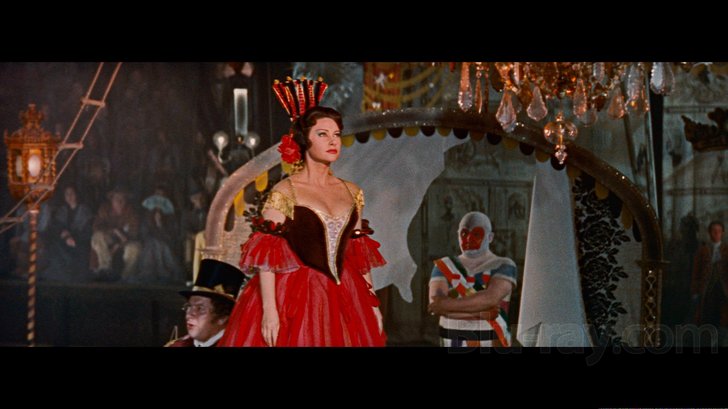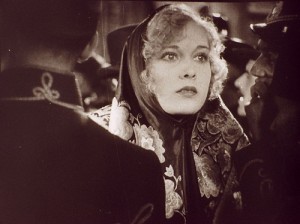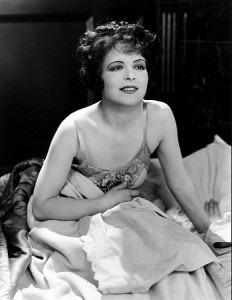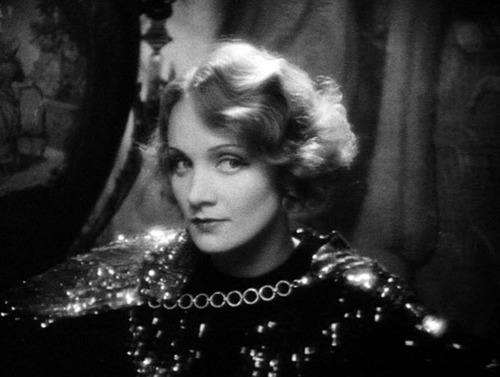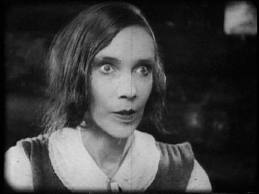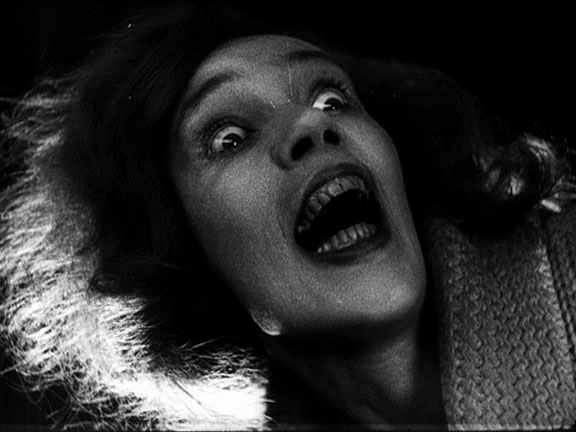Originally published in Moving Image Source (posted online as “Hidden Treasures”), July 17, 2008. — J.R.
Ever since I retired a few months ago from my 20-year stint as film reviewer for the Chicago Reader, perhaps the biggest perk of all has been freedom from the chore of having to keep up with new movies. In practice, this translates into more free time to keep up with old movies. So returning to one of my favorite annual pastimes, Il Cinema Ritrovato in Bologna — a festival that caters to people devoted to seeing old films in good prints — seemed only natural. Its 22nd edition, the fourth one I’ve attended, was especially rich.
Held in the oldest university town in Europe — hot and muggy this time of year, and full of labyrinthine back streets — the eight-day event mainly takes place at three air-conditioned cinemas during the day and at the Piazza Maggiore every evening, where the grand public shows up for outdoor screenings. (There’s also a jury that I’ve served on in previous years selecting the best restorations on DVD.)
Among this year’s Piazza attractions were the restored French version of Max Ophüls’s Lola Montès, the silent version of Alfred Hitchcock’s Blackmail with a live performance of a new symphonic score by Neil Brand (a clever and effective pastiche of such Hitchcock composers as Bernard Herrmann and Miklós Rósza), and portions of the two major retrospectives held this year, devoted to Lev Kuleshov and Josef von Sternberg. And since all the restorations of Charlie Chaplin films are done in Bologna, some fruits of that labor are always included: Kuleshov’s 1926 By the Law was accompanied by The Vagabond (1916) and Sternberg’s 1928 The Docks of New York was preceded by The Immigrant (1917).
This laid-back holiday for specialists, part conference and part festival, allows everyone to casually swap notes about films from 1908, early newsreels about suffragettes, a 1918 Italian serial, pre-Code Warners features, Marcel Pagnol comedies starring Fernandel, and ’50s Hollywood CinemaScope classics—to cite just a few of the daytime programs. The colors in the Lola Montès restoration, based on the bit I sampled, looked garish compared to the richer hues in the restoration of the German version carried out a few years ago by the Munich Film Archives (which Ophüls’s son Marcel, for obscure reasons, has chosen to suppress), and this impression was reinforced by the reactions of several colleagues. At one of the daytime sessions chaired by programmer Janet Bergstrom (who brought along Sternberg’s son Nicholas, a former cinematographer himself), it was a revelation to finally catch up with an eye-popping four-minute fragment of The Case of Lena Smith (1929) — the most celebrated of Sternberg’s lost films (and the focus of a fascinating 300-page anthology published last year by the Austrian Film Museum) — recently discovered by a Japanese film scholar.
Thanks to the rarity of some of the films, audience turnouts can sometimes be disproportionate to the films’ merits. Sternberg earned much of his clout at Paramount by retooling Children of Divorce (1927), an unreleasable Frank Lloyd feature with Gary Cooper and Clara Bow, and this patched-up turkey is usually so hard to see that it drew a standing-room-only crowd, even though it was almost as uninspired and impersonal as Raoul Walsh’s 1916 Ibsen adaptation, Pillars of Society, another scarce item shown. For me, the high point in Children of Divorce was seeing a trial run for a spectacular camera movement — a track into an extreme close-up — that Sternberg would employ to much better effect with Marlene Dietrich in his highly underrated Dishonored four years later.
Throughout the festival, Kuleshov and Sternberg proved to be rather strange bedfellows, offering an intriguing dialectic of what it meant to be pioneering mavericks in both Russian and Hollywood cinema of the silent and early sound periods and all the perils this might entail. On my first full day in Bologna, going directly from Sternberg’s Blonde Venus (1932) to Kuleshov’s Horizon (his first talkie, released the same year) produced all sorts of piquant contrasts. The former, about a German showgirl who winds up in America with a husband and a little boy, is the only one of Sternberg’s seven films with Dietrich that’s set even partially in the U.S. The latter, about a likably oafish Russian Jew immigrating to New York, is one of at least five Kuleshov films with North American themes and/or settings, even though Kuleshov never set foot on that continent.
Kuleshov — the teacher of Sergei Eisenstein, Vsevolod Pudovkin, and Boris Barnet, who virtually started his career by helping to complete the last film of the great pre-revolutionary Russian auteur Evgeni Bauer in 1917 — remains less known today for his films than for his famous montage experiment and “effect” (juxtaposing the same close-up of an actor with shots of a bowl of soup, a woman in a coffin, and a child to produce radically different meanings). In his Biographical Dictionary of Film, David Thomson characteristically introduces his own Kuleshov entry with the admission that he hasn’t seen any of the films. And even those who’ve seen some of Kuleshov’s better-known silents —The Extraordinary Adventures of Mr. West in the Land of the Bolsheviks (1924), The Death Ray (1925), or his stark Jack London adaptation, By the Law (1926, see below) — may be initially put off by the eccentric, caricatural acting of his remarkable wife, Aleksandra Khokhlova (as much of a cult figure in a way as Dietrich, and one of the most striking presences in Russian cinema, at once mannered and terrifying). Due to her aristocratic family background, Khokhlova — whose granddaughter was one of the three curators of this retrospective — wound up being barred from acting after The Great Consoler, although she continued working in film by assisting Kuleshov with direction. Her own solo feature, the 1930 Sasha, confounds expectations by showing her as a skillful director of nonprofessional actors in low-key, neorealist performances.
If one starts out with the standard American bias of opposing propaganda with personal expression, one might miss part of what’s distinctive about some of Kuleshov’s freer assignments. Even Forty Hearts (1930), an educational documentary about industrialization, is full of wit and invention involving Constructivist animation and other kinds of lively filmmaking. Though the crippling restrictions of the Stalinist era ultimately drove him into formulaic children’s films of varying quality, this retrospective proved that he maintained several strengths throughout his career.
The Great Consoler (1933), his greatest film, is not just an innovative masterpiece, but also one of the most profound reflections on the social utility of art to be found anywhere. As daring as any Alain Resnais film, it moves among three separate blocks of material. (1) In prison for embezzlement, William Sydney Porter, better known as O. Henry, is persuaded by the warden to convince a fellow prisoner, safecracker Jimmy Valentine, to open a locked bank safe without explosives in order not to destroy the papers inside, after the banker, who knows the combination, skips town with the funds. Valentine can do this only by painfully filing down his fingernails to sensitize his fingers, but the warden promises to grant him a pardon in return. Meanwhile, Porter is so impressed by Valentine’s skill that he writes a famous short story, “A Retrieved Reformation,” romanticizing Valentine’s heroic exploits. But then the warden, reneging on his promise, refuses to release Valentine, forcing Porter to realize in despair that he and Valentine have both been used. (2) “A Retrieved Reformation,” recounted parodically. (3) The effect of this story on one reader, Dulcie (Khokhlova), a shopgirl who is being forced to prostitute herself by the same cop who convinced the prison warden to exploit Valentine’s gifts. Even though Porter’s escapist tale falsifies the truth, it also inspires and emboldens Dulcie to shoot the cop when he tries to exploit her in turn.
Emotionally and dramatically, this paradoxical conclusion anticipates the climax of Andrei Tarkovsky’s Stalker (1979) by expressing both despair about the hollowness of idealistic fantasy and exaltation about the redemptive possibilities of art. What makes it all even more challenging is the nonstop playfulness, which at times creates narrative distractions. For instance, Dulcie’s flatmate and fellow shop clerk is viewed only in silhouette and is a shrill, compulsive giggler, neither of which serves to clarify anything else in the plot. This may help to explain why The Great Consoler was denounced in Russia as formalist, effectively putting an end to Kuleshov’s artistic freedom — and, in spite of being available with English subtitles (on film) in the U.K., has been ignored in the West ever since.
Indeed, the degree to which the early and radically experimental sound period of Russian cinema continues to be overlooked in spite of its riches never ceases to amaze me. Although Barnet’s Outskirts, Pudovkin’s Deserter, and Dziga Vertov’s Enthusiasm are now all available on DVD, they’ve been almost as consistently ignored by critics as Aleksandr Dovzhenko’s unavailable first talkie, Ivan (see below) — for me his greatest sound feature. Perhaps the most important achievement of the annual Bologna bash is to inspire these re-evaluations.

